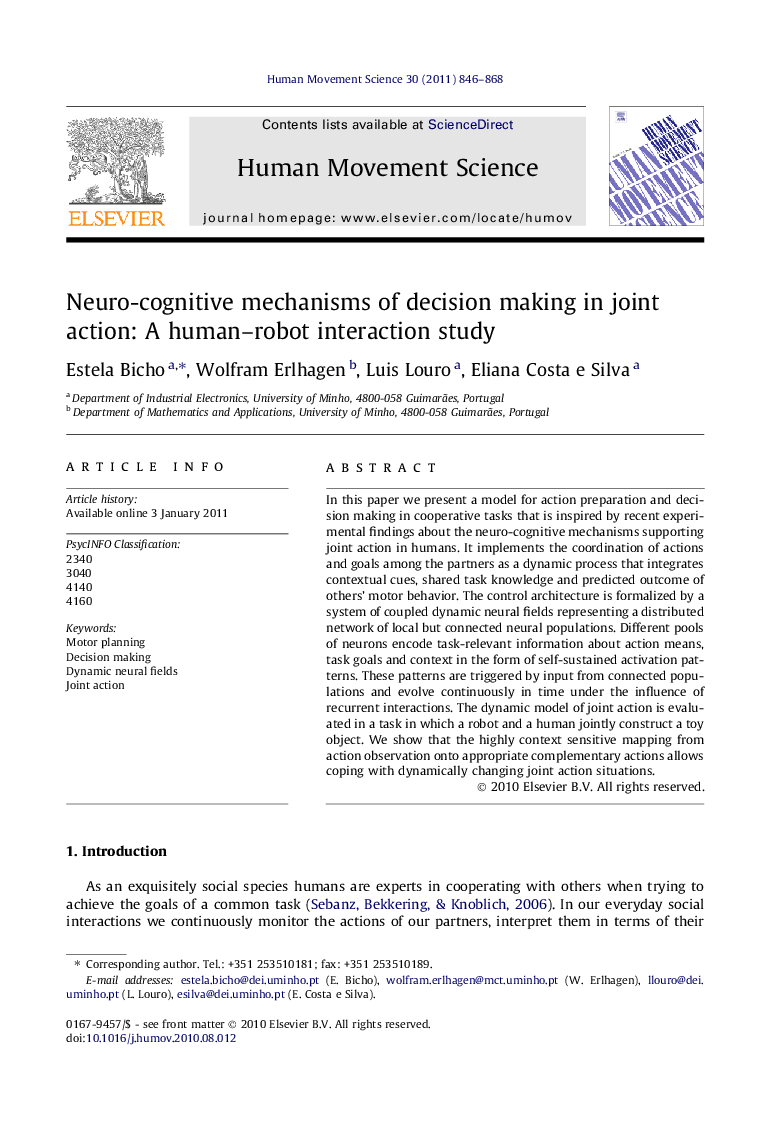| Article ID | Journal | Published Year | Pages | File Type |
|---|---|---|---|---|
| 928605 | Human Movement Science | 2011 | 23 Pages |
In this paper we present a model for action preparation and decision making in cooperative tasks that is inspired by recent experimental findings about the neuro-cognitive mechanisms supporting joint action in humans. It implements the coordination of actions and goals among the partners as a dynamic process that integrates contextual cues, shared task knowledge and predicted outcome of others’ motor behavior. The control architecture is formalized by a system of coupled dynamic neural fields representing a distributed network of local but connected neural populations. Different pools of neurons encode task-relevant information about action means, task goals and context in the form of self-sustained activation patterns. These patterns are triggered by input from connected populations and evolve continuously in time under the influence of recurrent interactions. The dynamic model of joint action is evaluated in a task in which a robot and a human jointly construct a toy object. We show that the highly context sensitive mapping from action observation onto appropriate complementary actions allows coping with dynamically changing joint action situations.
